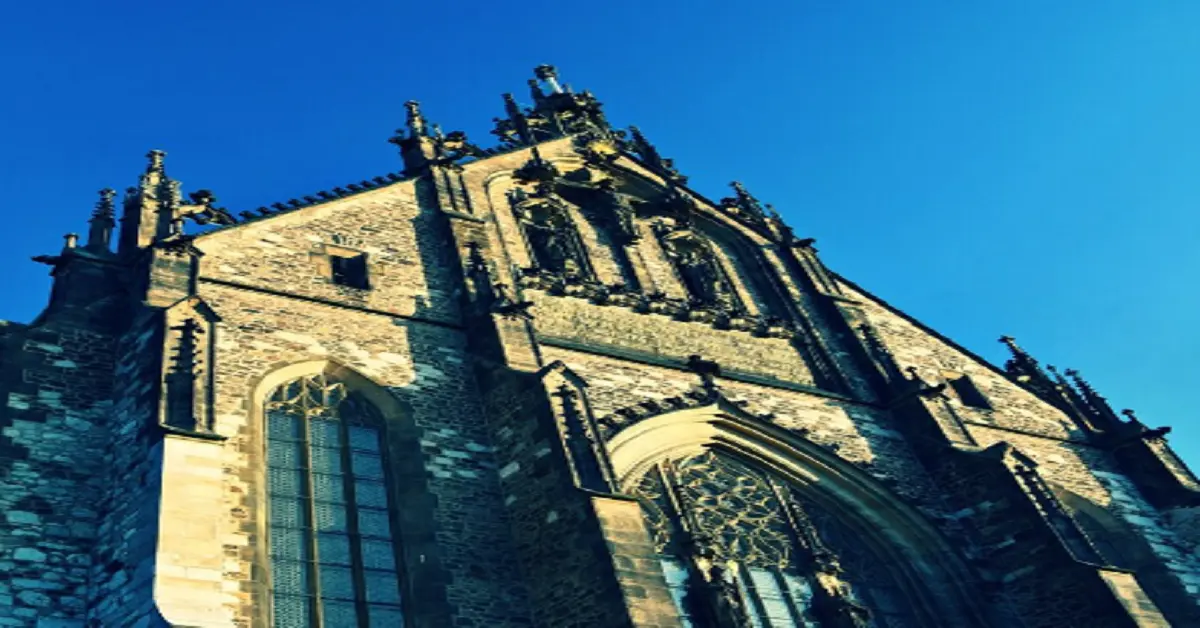Exploring the Splendor of St. Vitus Church (Kostel sv. Víta)

St. Vitus Church, known in Czech as 聖ヴィート教会(kostelsv。vita) tands as one of the most iconic landmarks in the Czech Republic. Its towering spires and intricate architectural details make it a must-visit site for anyone exploring the historic city of Prague. This article delves into the rich history, stunning architecture, and cultural significance of 聖ヴィート教会(kostelsv。vita), offering a comprehensive guide for visitors and history enthusiasts alike.
History of St. Vitus Church
St. Vitus Church’s story begins in the 14th century, during the reign of Charles IV, who laid the foundation stone in 1344. Over the centuries, the 聖ヴィート教会(kostelsv。vita) has witnessed numerous historical events, from coronations to religious ceremonies, making it a central figure in Czech history. The church’s construction took nearly six centuries to complete, reflecting various architectural styles that evolved during its long building period.
Architectural Design
Gothic Influence
St. Vitus Church is a masterpiece of Gothic architecture, characterized by its pointed arches, ribbed vaults, and flying buttresses. The towering spires and intricate stone carvings evoke a sense of grandeur and spiritual aspiration, which are hallmarks of Gothic design. The church’s Gothic elements are not just about aesthetics; they carry deep symbolic meanings, representing the connection between heaven and earth.
Baroque and Renaissance Additions
As the church evolved, Baroque and Renaissance influences began to surface, particularly in its interior design. The Baroque period brought a sense of drama and movement, with ornate decorations and elaborate altarpieces. Renaissance elements added symmetry and classical proportions, blending seamlessly with the Gothic base to create a cohesive and richly detailed structure.
Interior Highlights
The Altar
The main altar of St. Vitus Church is a stunning piece of artistry, adorned with gold leaf and intricate carvings. It serves as the focal point of the church’s interior, drawing the eyes of visitors and worshippers alike. The altar is not only a place of worship but also a symbol of the church’s historical and religious significance.
Stained Glass Windows
The stained glass windows of 聖ヴィート教会(kostelsv。vita) are among its most captivating features. Each window tells a story, depicting scenes from the Bible and the lives of saints. The light filtering through the colored glass creates an ethereal atmosphere, bathing the interior in a kaleidoscope of colors and enhancing the spiritual experience.
The Nave and Aisles
Walking through the nave and aisles of 聖ヴィート教会(kostelsv。vita), one can’t help but marvel at the architectural brilliance. The high ceilings and spacious layout are designed to inspire awe and reverence. The detailed stonework, coupled with the church’s vast scale, reflects the craftsmanship and dedication that went into its construction.
Cultural and Religious Importance
Role in Czech Religious Practices
St. Vitus Church has played a pivotal role in Czech religious life for centuries. It has been the site of numerous important religious ceremonies, including the coronation of Czech kings and queens. The church continues to serve as a major place of worship, hosting services, and religious events that draw both locals and visitors.
Cultural Significance
Beyond its religious functions, St. Vitus Church holds a special place in Czech culture. It has influenced Czech art, literature, and music, serving as an inspiration for countless artists. The church is a symbol of national pride, representing the resilience and faith of the Czech people throughout history.
Famous Events and Figures
Coronations and Royal Events
St. Vitus Church has been the backdrop for many royal events, including the coronations of Czech monarchs. These ceremonies were grand affairs, steeped in tradition and pageantry, with the church providing a fittingly majestic setting. The church’s royal connections add to its allure, making it a site of both historical and cultural importance.
Saints and Religious Figures
Over the centuries, St. Vitus Church has been associated with various saints and religious figures. Among them is St. Vitus himself, the patron saint of dancers, actors, and epileptics. The church’s dedication to St. Vitus reflects its deep spiritual roots and its role as a place of pilgrimage for believers.
Tourist Information
Visiting Hours and Accessibility
St. Vitus Church is open to visitors year-round, with specific hours depending on the season. It’s advisable to check the official website for the most current visiting times. The church is easily accessible from various parts of Prague, with public transportation options available.
Guided Tours
For those interested in a deeper understanding of 聖ヴィート教会(kostelsv。vita), guided tours are available. These tours offer insights into the church’s history, architecture, and art, providing a richer experience than a self-guided visit. Visitors can expect to spend at least an hour exploring the church’s many wonders.
Conclusion
聖ヴィート教会(kostelsv。vita) is more than just a historic building; it’s a symbol of Czech history, culture, and spirituality. From its stunning Gothic architecture to its role in royal and religious events, the church offers a fascinating glimpse into the past. Whether you’re a history buff, an architecture enthusiast, or simply someone looking to explore Prague’s rich heritage, St. Vitus Church is a must-visit destination.